A Visual Guide to Low Back Pain
What Is Low Back Pain?
 Low back pain is a universal
human experience -- almost everyone
has it at some point. The lower back,
which starts below the ribcage, is
called the lumbar region. Pain here
can be intense and is one of the top
causes of missed work. Fortunately,
low back pain often gets better on its
own. When it doesn't, there are
effective treatments.
Low back pain is a universal
human experience -- almost everyone
has it at some point. The lower back,
which starts below the ribcage, is
called the lumbar region. Pain here
can be intense and is one of the top
causes of missed work. Fortunately,
low back pain often gets better on its
own. When it doesn't, there are
effective treatments.Symptoms of Low Back Pain
 Symptoms range from a dull
ache to a stabbing or shooting
sensation. The pain may make it hard
to move or stand up straight. Acute
back pain comes on suddenly, often
after an injury from sports or heavy
lifting. Pain that lasts more than
three months is considered chronic. If
your pain is not better within 72
hours, you should consult a doctor.
Symptoms range from a dull
ache to a stabbing or shooting
sensation. The pain may make it hard
to move or stand up straight. Acute
back pain comes on suddenly, often
after an injury from sports or heavy
lifting. Pain that lasts more than
three months is considered chronic. If
your pain is not better within 72
hours, you should consult a doctor.Symptoms That Require Urgent Care
Back Pain Culprit: Your Bag
 Although you may wear your
purse, backpack, or briefcase over
your shoulder, it is the lower back
that supports the upper body --
including any additional weight you
carry. So an overstuffed bag can
strain the lower back, especially if
you carry it day after day. If you
must tote a heavy load, consider
switching to a wheeled briefcase.
Although you may wear your
purse, backpack, or briefcase over
your shoulder, it is the lower back
that supports the upper body --
including any additional weight you
carry. So an overstuffed bag can
strain the lower back, especially if
you carry it day after day. If you
must tote a heavy load, consider
switching to a wheeled briefcase.Home Care for Low Back Pain
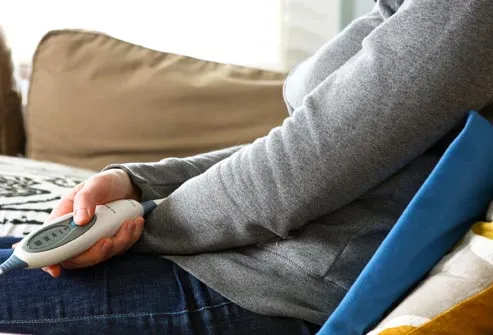 Back
pain due to muscle
strain will usually get better
on its own, but you can take
steps to make yourself more
comfortable. A heating pad or
warm baths may provide temporary
pain relief.
Back
pain due to muscle
strain will usually get better
on its own, but you can take
steps to make yourself more
comfortable. A heating pad or
warm baths may provide temporary
pain relief.
The Bed Rest Debate
 When
your back hurts, you may not feel
like getting out of bed. But if
the problem is muscle strain,
doctors recommend returning to
your normal activities as soon as
possible. Studies suggest that any
more than a day or two of bed rest
can actually make the pain worse
and may reduce muscle tone and
flexibility.
When
your back hurts, you may not feel
like getting out of bed. But if
the problem is muscle strain,
doctors recommend returning to
your normal activities as soon as
possible. Studies suggest that any
more than a day or two of bed rest
can actually make the pain worse
and may reduce muscle tone and
flexibility.Massage Therapy
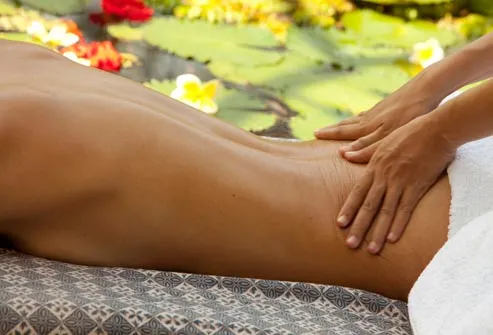 A study funded by the
government suggests that massage
may help relieve chronic low
back pain. After 10 weeks,
people who had weekly massages
had less pain and were better
able to go about their daily
activities than people who got
traditional care. That was true
no matter what type of massage
they got, and the benefits
lasted at least six months.
A study funded by the
government suggests that massage
may help relieve chronic low
back pain. After 10 weeks,
people who had weekly massages
had less pain and were better
able to go about their daily
activities than people who got
traditional care. That was true
no matter what type of massage
they got, and the benefits
lasted at least six months.Acupuncture
 Can acupuncture treat
back pain? The evidence is
mixed. In 2009, a study of
several hundred people with
long-lasting back pain found
surprising results. Those who
had simulated acupuncture
(involving toothpicks tapping
the skin) got the same benefits
as those who had real
acupuncture with needles. After
eight weeks, both groups had
greater relief than people who
did not have acupuncture.
Can acupuncture treat
back pain? The evidence is
mixed. In 2009, a study of
several hundred people with
long-lasting back pain found
surprising results. Those who
had simulated acupuncture
(involving toothpicks tapping
the skin) got the same benefits
as those who had real
acupuncture with needles. After
eight weeks, both groups had
greater relief than people who
did not have acupuncture.Surgery
 If long-lasting back
pain is interfering with your
daily life, and other treatments
have not provided relief, you
may be a candidate for surgery.
Depending on the cause of your
pain, a surgeon may remove a
herniated disc, widen the space
around the spinal cord, and/or
fuse two spinal vertebrae
together.
If long-lasting back
pain is interfering with your
daily life, and other treatments
have not provided relief, you
may be a candidate for surgery.
Depending on the cause of your
pain, a surgeon may remove a
herniated disc, widen the space
around the spinal cord, and/or
fuse two spinal vertebrae
together.Physical Therapy
 If
back pain has left you
inactive for a long time, a
rehabilitation program can
help you strengthen your
muscles and get back to your
daily activities. A physical
therapist can guide you
through stretches, strength
exercises, and low-impact
cardio that will help you be
fitter without straining your
back.
If
back pain has left you
inactive for a long time, a
rehabilitation program can
help you strengthen your
muscles and get back to your
daily activities. A physical
therapist can guide you
through stretches, strength
exercises, and low-impact
cardio that will help you be
fitter without straining your
back.Strengthening the Back
 Two types of
strength-training moves that
may benefit the lower back are
flexion and extension
exercises. In flexion
exercises, you bend forward to
stretch the muscles of the
back and hips. In extension
exercises, you bend backward
to develop the muscles that
support the spine. One example
is doing leg lifts while lying
on your stomach. Depending on
the cause of your back pain,
there are some exercises you
should not do. If you have
back pain, make sure to talk
to your doctor about what
exercises are safe for you.
Two types of
strength-training moves that
may benefit the lower back are
flexion and extension
exercises. In flexion
exercises, you bend forward to
stretch the muscles of the
back and hips. In extension
exercises, you bend backward
to develop the muscles that
support the spine. One example
is doing leg lifts while lying
on your stomach. Depending on
the cause of your back pain,
there are some exercises you
should not do. If you have
back pain, make sure to talk
to your doctor about what
exercises are safe for you.







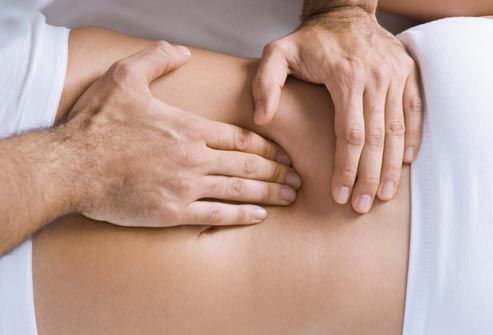
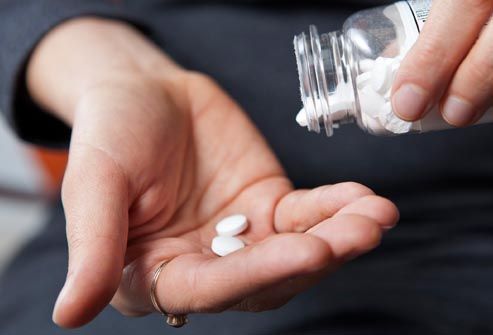
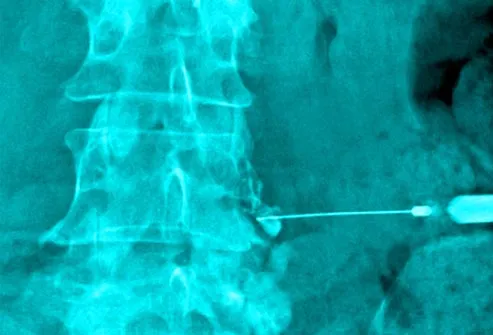

No comments:
Post a Comment